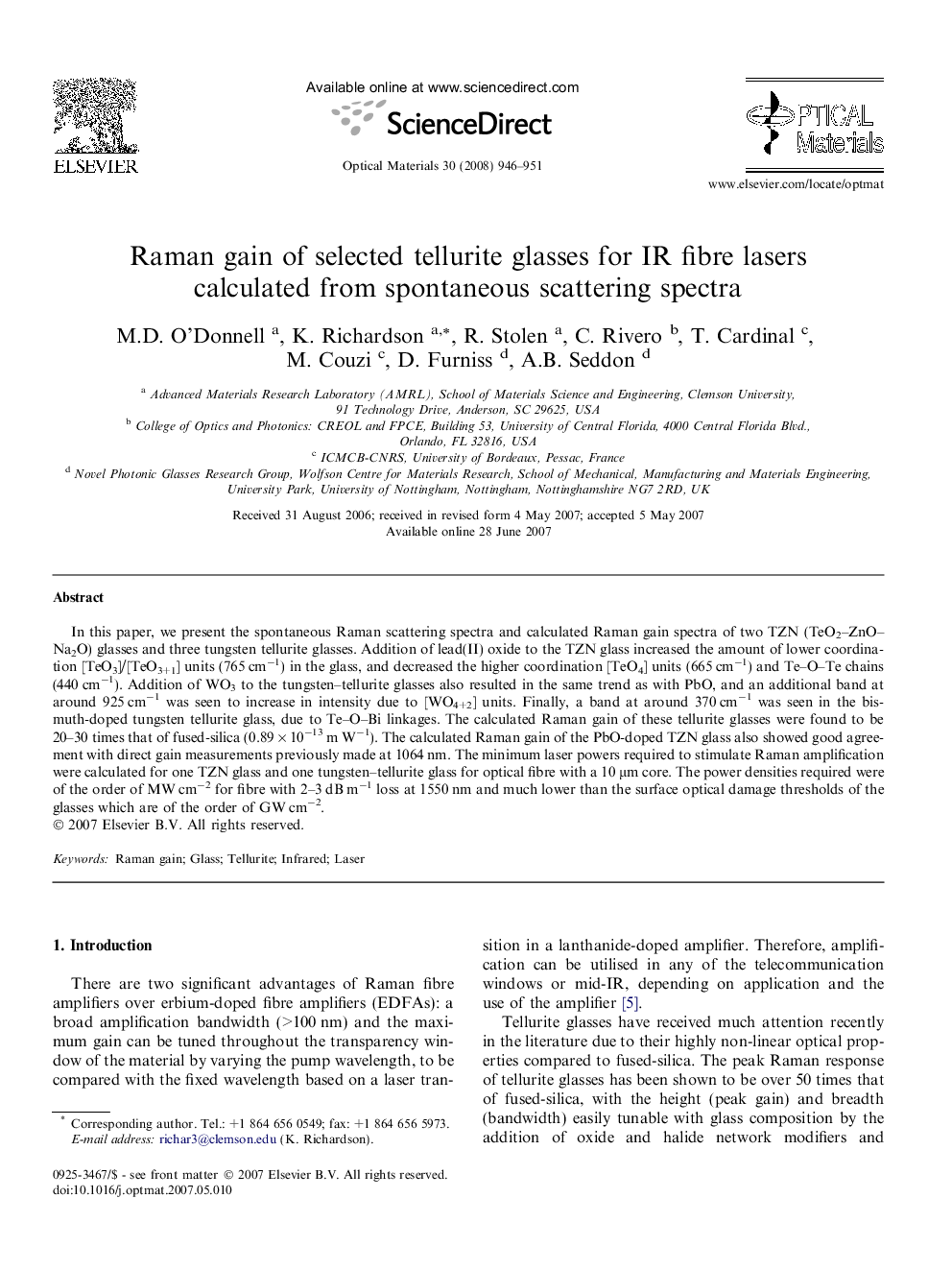| Article ID | Journal | Published Year | Pages | File Type |
|---|---|---|---|---|
| 1497274 | Optical Materials | 2008 | 6 Pages |
In this paper, we present the spontaneous Raman scattering spectra and calculated Raman gain spectra of two TZN (TeO2–ZnO–Na2O) glasses and three tungsten tellurite glasses. Addition of lead(II) oxide to the TZN glass increased the amount of lower coordination [TeO3]/[TeO3+1] units (765 cm−1) in the glass, and decreased the higher coordination [TeO4] units (665 cm−1) and Te–O–Te chains (440 cm−1). Addition of WO3 to the tungsten–tellurite glasses also resulted in the same trend as with PbO, and an additional band at around 925 cm−1 was seen to increase in intensity due to [WO4+2] units. Finally, a band at around 370 cm−1 was seen in the bismuth-doped tungsten tellurite glass, due to Te–O–Bi linkages. The calculated Raman gain of these tellurite glasses were found to be 20–30 times that of fused-silica (0.89 × 10−13 m W−1). The calculated Raman gain of the PbO-doped TZN glass also showed good agreement with direct gain measurements previously made at 1064 nm. The minimum laser powers required to stimulate Raman amplification were calculated for one TZN glass and one tungsten–tellurite glass for optical fibre with a 10 μm core. The power densities required were of the order of MW cm−2 for fibre with 2–3 dB m−1 loss at 1550 nm and much lower than the surface optical damage thresholds of the glasses which are of the order of GW cm−2.
